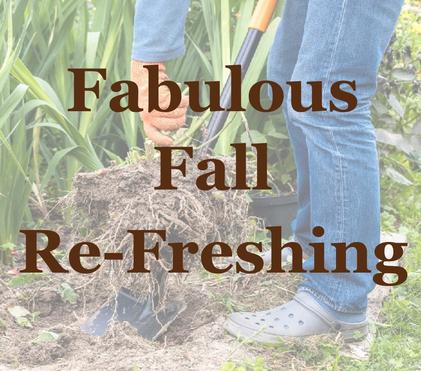Create a Pollinator-Friendly Garden Using AAS Winners
Having a diverse and significant population of bees, butterflies and other pollinators in the garden is an indicator of success in providing for their needs!
Written/Photos by Mark Dwyer
Landscape Prescriptions by MD
Many All-America Selections (AAS) Winners are “pollinator magnets”. Having the benefit of significant trialing and evaluation, AAS Winners are already a success story waiting to happen in terms of adaptability and performance. Having the added benefit of attracting beneficial pollinators to the garden makes them extremely valuable in our garden beds, borders, and containers.
We’ve all seen the news and research revolving around serious concerns for the health, vitality and population security for bees and other pollinators. The value of insect pollination is staggering when we consider that 40% of all foods and beverages are somehow dependent on insect pollination. Over 200,000 species of creatures serve as pollinators and it makes sense to have beautiful, welcoming garden spaces that help attract, foster, support and invigorate our local pollinator populations.
Five Tips for a Pollinator-Friendly Garden
1.) Include a wide range of All-America Selection (AAS) Winners that promote a diverse pollinator audience.
These twelve AAS Winners can have value and impact in your pollinator-friendly plantings. Massing these plants will not only contribute to the ornamental appeal of the space but these groupings will become destinations for pollinator activity. Including these AAS Winners in containers is also a valuable way of expanding the pollinator appeal of the garden.
2.) Minimize or eliminate chemical use, particularly pesticides, in garden spaces where you seek to maximize pollinator appeal.
Many pesticides are non-selective and may have a dramatic impact on your desired insect populations by adversely affecting both nectar and pollen.
3.) Provide a source of water in the garden.
For many pollinators, a simple, sandy wet patch, puddle or shallow dish of water with a significant edge (for resting) can be beneficial for visiting pollinators.
4.) Consider diversifying plant material to include the widest range of bloom time from the earliest of spring-blooming bulbs to the latest blooming annuals and perennials.
Woody plants may also provide benefits for pollinators. Native plantings can have significant value for pollinators in these combinations.
5.) Include some plants for the larval stage of some of our most beautiful garden insects.
For example, monarch caterpillars benefit from milkweeds (Asclepias sp.) to nibble on and swallowtail caterpillars will enjoy parsley (Petroselinum), dill (Anethum) and fennel (Foeniculum). Accomplish some research to see what plants are the most appropriate and valuable for this “pollinator service” and realize that ideally, you should see some nibbling!
With continued urbanization, population growth, chemical use, and resource management concerns, the value of our gardens as a refuge for pollinators becomes more important. Including pollinator-friendly AAS Winners makes our spaces a colorful and welcome oasis and respite for pollinators that are increasingly challenged with finding these spaces. Adding pollinator-friendly plants to your vegetable garden is a great way to help pollinators and assist your insect pollinating vegetables, read more here.
Consider planting some of these excellent AAS Winners to maximize the “pollinator appeal” in your garden and landscape.
Agastache ‘Golden Jubilee’
The profusion of blue blossoms above golden foliage will attract a wide range of pollinators during the bloom period, including countless bees!
Anethum graveolens ‘Fernleaf’
This ornamental herb Dill serves double duty in the kitchen but the flowers will attract pollinators and hopefully, you’ll see some caterpillars nibbling on the foliage!
Cleome ‘Sparkler Blush’
Gorgeous, long-lasting blossoms on this Spider Flower will be magnets for the trifecta of bees, butterflies and hummingbirds.
Echinacea ‘Cheyenne Spirit’
Coneflowers are pollinator magnets and this colorful selection is no exception for a long period of bloom and pollinator value
Gaillardia ‘Arizona Sun’
Sometimes returning as a perennial, this Blanket Flower will have blooms attractive to pollinators all the way to hard frost.
Rudbeckia ‘Indian Summer’
Tall and colorful, this classic selection of gloriosa daisy has large blossoms that act as landing pads for butterflies and bees.
Rudbeckia ‘Prairie Sun’
This green-centered rudbeckia selection has substantial value to attract pollinators over a long bloom period.
Salvia ‘Summer Jewel Red’
This selection (and all others in the Summer Jewel series) is a slam dunk for hummingbirds and a wide range of other pollinators.
Tithonia ‘Torch’
While the bright orange daisy-like blooms don’t appear until later summer, the sheer volume of visiting butterflies, hummingbirds and bees is amazing.
Verbena ‘EnduraScape™ Pink Bicolor’
Durability and heat tolerance go hand in hand with this variety along with attracting the full gamut of interested pollinators.
Zinnia ‘Zahara Double Fire’
Brilliant flowers will be attractive to both the gardener and visiting pollinators.
Zinnia ‘Zowie! Yellow Flame’
With a uniquely brilliant color pattern, this zinnia will also garner attention from bees, butterflies and hummingbirds
This post is provided as an educational/inspirational service of All-America Selections. We thank them for allowing us to share this information.
Click here for more information

